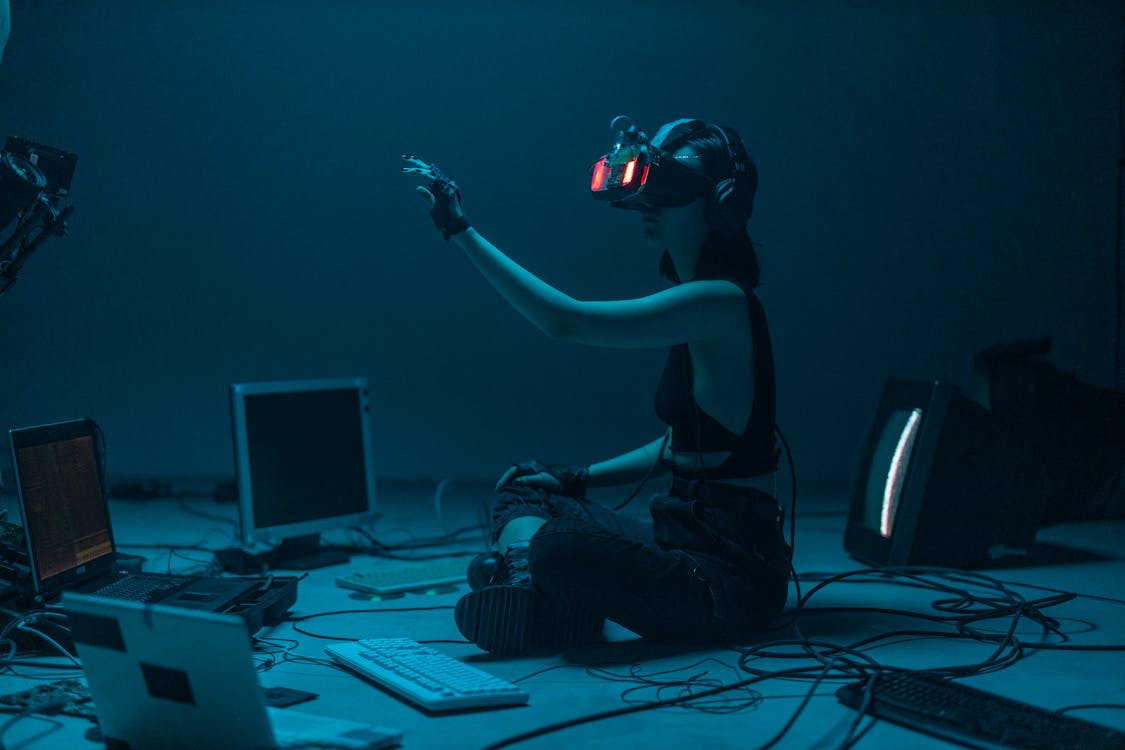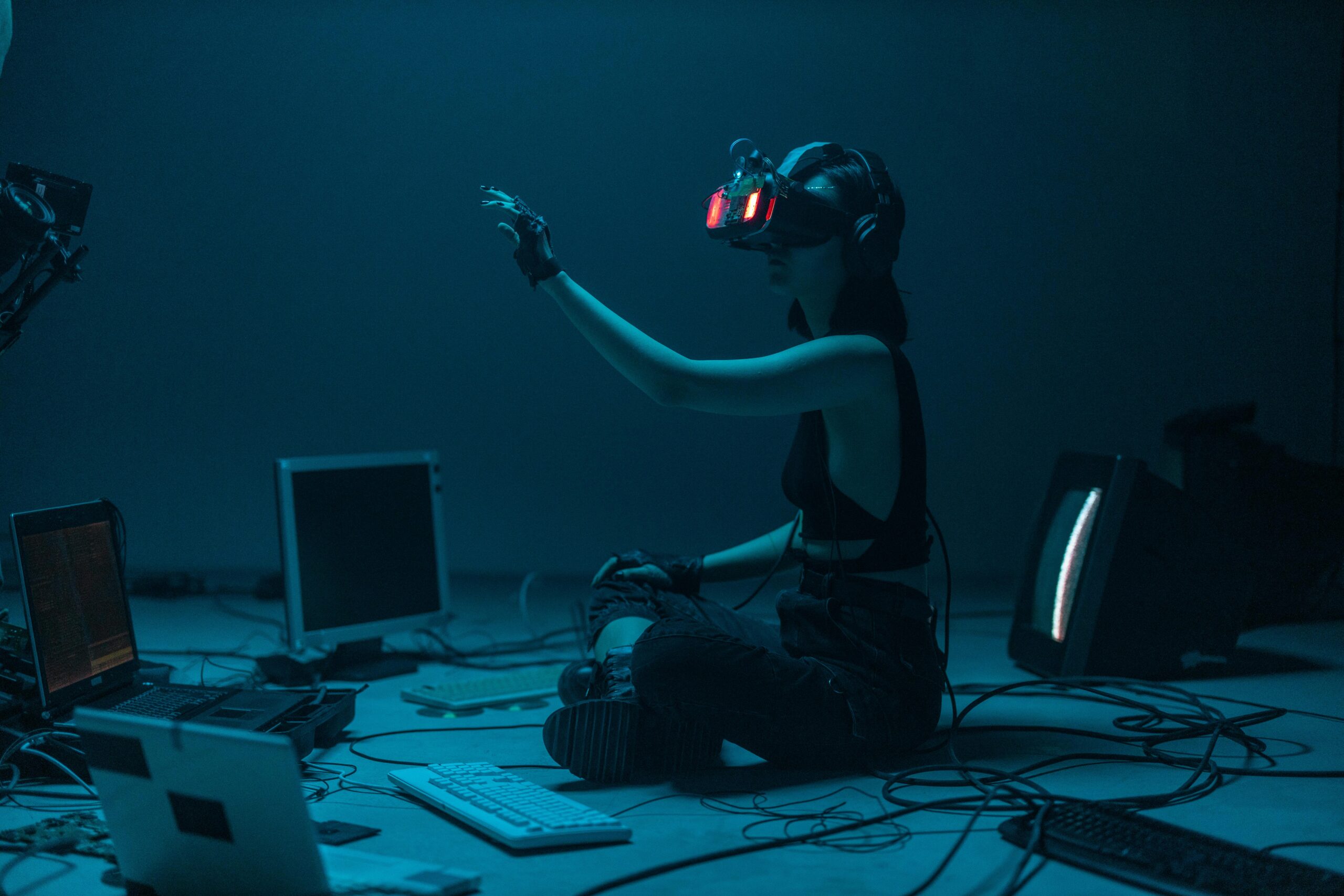Augmented Reality: Transforming the Digital Landscape
Augmented Reality (AR) enhances the real world by blending virtual elements like 3D objects, sounds, and sensory inputs into the user’s environment. It’s an interactive technology that enriches user experiences by creating immersive and contextually relevant visualizations.
Key Characteristics of AR
- Interactive in Real-Time: AR operates live, providing instant overlays without lag.
- Context-Aware: AR integrates with physical spaces using location and environmental data.
- Combines Real and Virtual Worlds: It superimposes computer-generated content into physical surroundings.
Top Machine Learning Trends Transforming Industries
History of AR
AR’s origins can be traced back to the 1960s when Ivan Sutherland created the first AR system called the “Sword of Damocles,” a rudimentary AR head-mounted display. Over the decades, AR has evolved into a practical and consumer-friendly technology, now accessible through devices like smartphones and tablets.

How Augmented Reality Works
To understand AR better, let’s explore its key operational components:
Hardwa re
- AR-Enabled Devices:
- Smartphones and tablets (e.g., iPhones, Samsung Galaxy)
- Wearables like HoloLens, Magic Leap, and AR smart glasses
- AR projectors and head-up displays (HUDs) in vehicles
- Input Devices:
- Cameras and depth sensors capture environmental data.
- Motion sensors and gyroscopes track device orientation and position.
Software
- AR Frameworks:
- ARKit: Apple’s framework, offering face tracking and motion capture.
- ARCore: Google’s equivalent for Android devices.
- Vuforia: A popular third-party AR platform supporting cross-device functionality.
- Data Processing and AI:
- AI algorithms analyze captured data, allowing AR apps to map environments and identify objects.
Educational Resources
- Coursera: Augmented Reality Specialization
Learn AR Development- Offers AR courses, covering Unity, ARKit, and ARCore.
- edX: AR/VR Development
Explore AR/VR Education- Provides insights into creating AR applications with hands-on projects.
Development Tools and Platforms
- Unity
Unity AR Development- A popular game engine for creating AR applications with ARKit and ARCore support.
- Vuforia
Vuforia AR Engine- A leading AR platform for building immersive experiences.
- ARKit (Apple)
Apple ARKit- A framework for creating AR experiences on iOS devices.
- ARCore (Google)
Google ARCore- A platform for AR development on Android and iOS devices.
Technologies Behind AR
- SLAM (Simultaneous Localization and Mapping): This technology maps environments in real-time, ensuring AR content aligns with physical spaces.

- Marker-Based AR: Uses predefined images or objects (QR codes, logos) as triggers.
- Markerless AR: Relies on GPS, accelerometers, and depth mapping to deliver content anywhere.
- Projection-Based AR: Projects visuals onto surfaces, enabling physical interaction with digital content.
Applications of Augmented Reality
AR in Healthcare
- Remote Surgeries: AR-powered robotic systems enable surgeons to perform operations remotely with precise guidance.
- Rehabilitation: Virtual environments and AR tools aid in physical therapy and cognitive rehabilitation.
- Mental Health: AR experiences like calming environments and exposure therapy help patients manage anxiety and PTSD.
AR in Retail
- E-Commerce Revolution: Companies like IKEA and Sephora utilize AR apps to let customers visualize furniture or test makeup before purchasing.
- Customer Engagement: AR apps create interactive advertisements, boosting customer interest.
AR in Education
- Interactive Classrooms: AR apps such as Google Expeditions allow students to explore historical landmarks or conduct virtual lab experiments.
- Special Education: AR tools provide tailored learning experiences for students with disabilities.
AR in Gaming and Entertainment
- Theme Parks: AR enhances rides with immersive storytelling and gamified experiences.
- Interactive Advertising: Brands use AR-based campaigns, such as Pepsi’s AR bus shelter ads, to capture public attention.
Benefits of Augmented Reality
- Enhances Learning and Training:
AR facilitates hands-on learning, improving information retention by 70%. For example, Boeing uses AR to train technicians in airplane wiring, reducing errors by 30%. - Boosts Marketing Impact:
AR campaigns are 60% more likely to engage customers than traditional methods. Companies like Coca-Cola have launched AR-enabled packaging campaigns to connect with consumers emotionally. - Optimizes Industrial Processes:
- AR helps factory workers assemble complex machinery with visual instructions.
- Logistics companies like DHL use AR glasses to optimize warehouse operations, increasing efficiency by 25%.
- Improves Accessibility:
- AR navigation apps like “Seeing AI” assist visually impaired users by describing surroundings.
Challenges and Limitations
- Technical Barriers:
- Limited battery life and processing power in mobile devices constrain prolonged AR use.
- Accurate AR rendering requires powerful hardware and robust algorithms.
- High Development Costs:
- Designing AR applications involves significant investment in R&D, programming, and user testing.
- Ethical Concerns:
- Excessive reliance on AR could lead to privacy breaches and data misuse.
- For instance, Pokémon GO faced criticism for encouraging users to venture into restricted or dangerous areas.
- Adoption Challenges:
- According to a 2023 Gartner report, only 35% of businesses are actively implementing AR, citing lack of expertise as a major hurdle.
Future of Augmented Reality
The global AR market, valued at $39 billion in 2022, is projected to reach $85 billion by 2030. Here’s what lies ahead:
Advancements in Hardware
- Next-Gen Wearables: Companies like Meta and Apple are developing lightweight, consumer-friendly AR glasses.
- AR in Vehicles: Automakers are integrating AR HUDs for navigation and safety, providing real-time lane guidance and obstacle detection.
Expanding Industry Adoption
- Real Estate: Virtual AR walkthroughs allow potential buyers to explore properties remotely.
- Tourism: AR-guided tours and interactive exhibits enhance traveler experiences.
- Agriculture: AR solutions provide farmers with crop health analysis and weather updates in real time.
Social Impact
- Remote Collaboration: AR conferencing tools (e.g., Spatial) are revolutionizing virtual meetings, offering 3D avatars and shared workspaces.
- Inclusivity: AR is increasingly used to make experiences accessible for individuals with disabilities.
Final Thoughts
Augmented Reality is no longer confined to futuristic speculation; it’s a transformative force shaping industries and redefining interactions. As AR becomes more integrated into everyday life, its potential to enrich learning, enhance efficiency, and create immersive experiences continues to grow.
The journey of AR is just beginning, and its advancements promise a future where digital and physical worlds coexist harmoniously. Whether through life-saving applications in healthcare or creative innovations in entertainment, AR is driving a new era of possibilities.










Leave a Reply